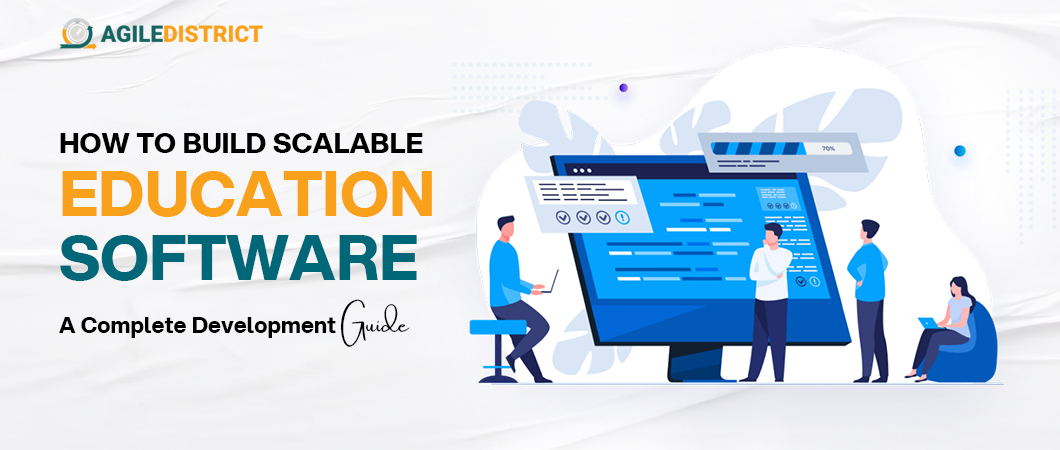Why Scalability Matters in Education Software Development
Scalability is critical for education software development because user demand fluctuates unexpectedly. Systems that can’t scale effectively risk performance issues like slow load times or failures during exams and webinars. Education software development services that build resilient architectures—leveraging auto‑scaling, container orchestration, and horizontal scaling—ensure reliable delivery under heavy traffic. Scalable systems also support growth into new regions, integration with third‑party services (LMS, payment gateways), and expansion of multimedia content. Without scalability, education platforms hinder user experience and damage reputation. In contrast, scalable education software development empowers institutions to expand offerings confidently, ensuring both performance and adaptability remain seamless as operations grow.
Key Features Every Scalable Education Software Should Have
Robust education software development requires well-defined features to support scaling. Cloud-based infrastructure with elastic compute and storage allows systems to accommodate growth in real time. Modular design and microservices make it easier to scale individual components like content management, user profiles, and analytics. Integration capabilities via APIs add flexibility—especially for third‑party tools like payment gateways, video platforms, or credential verification. Comprehensive analytics dashboards help administrators monitor usage, performance, and learning outcomes. Security features such as role‑based access control keep large numbers of users secure. These essential features combined form the backbone of a scalable education software platform and should be diligently implemented during education software development.
Step-by-Step Education Software Development Lifecycle
An effective education software development lifecycle (SDLC) ensures scalability at every phase. It starts with requirement gathering—identifying target user base, content load, and performance needs. Next is planning and architecture, establishing microservices, database selection, and cloud infrastructure. During development, iterative sprints allow early testing of load handling and performance metrics. Testing includes unit, integration, and stress testing to validate scalability. Deployment uses CI/CD pipelines to ensure seamless updates. After go-live, operations teams monitor performance, usage trends, and error rates to fine‑tune elasticity. Regular updates and capacity planning keep systems aligned with user growth. Following this cycle ensures stability under increasing demand, which is essential in scalable education software development.
Choosing the Right Tech Stack for Education Software Development
Selecting an optimal tech stack is crucial for successful education software development. On the backend, languages and frameworks like Node.js, Python Django, or Java Spring Boot support scalable microservice architectures. Databases such as PostgreSQL and MongoDB offer relational and document storage with horizontal scaling support. Front-end frameworks like React, Vue.js, or Angular ensure responsive, dynamic interfaces capable of handling many simultaneous users. Containerization with Docker and orchestration via Kubernetes allow easy deployment and scaling across clusters. Cloud providers like AWS, Google Cloud, or Azure offer managed services—including auto‑scaling, load balancing, and serverless functions—enabling education software development services to scale automatically under varying workloads.
UI/UX Design Strategies for Scalable Learning Platforms
Scalable education software development also demands an intuitive and responsive UI/UX. Design should prioritize accessibility, using intuitive navigation, readable layouts, and clear feedback. Frontend performance is essential—lazy loading media, minimizing bundle sizes, and optimizing rendering ensures smooth experiences even under heavy simultaneous usage. Component-based design patterns allow reuse and consistent styling. Responsive layouts automatically adapt to various devices and screen sizes, enabling wider reach. Scalable platforms also incorporate localization and theming capabilities for multi-region deployments. A well-crafted UI/UX strategy ensures that as the platform scales, usability remains high, supporting user adoption and retention—two critical success factors for any education software development project.
Security and Compliance in Education Software Development
When delivering education software development services, security and regulatory compliance are non-negotiable priorities. Educational platforms handle sensitive personal data—student profiles, grades, and behavioral records—making encryption at rest and in transit mandatory. Implementing multi-factor authentication and role-based access control ensures secure user management. Areas like GDPR, FERPA, and COPPA demand strict handling of student information, requiring audit trails and explicit consent. Regular vulnerability scans and penetration tests help identify weaknesses in evolving codebases. Scalable education software development must incorporate security by design—a proactive approach embedding compliance and data protection into architecture, coding standards, and operational workflows to safeguard users at scale.
Performance Optimization Techniques for Scalable Solutions
To achieve truly scalable education software development, performance must be optimized across the stack. Caching frequently accessed data or course assets using Redis or CDN reduces server load. Load balancers distribute traffic evenly, preventing bottlenecks. Asynchronous processing for tasks like notifications or data processing keeps the UI responsive. Database optimization—indexing, partitioning, and query tuning—enhances response times under increasing data volume. Monitoring tools such as Prometheus, Grafana, or New Relic provide real-time insights into system behavior. Implementing auto-scaling rules based on CPU, memory, or response time metrics ensures resources match demand dynamically. These performance optimizations collectively support scalable, high-performing education software under diverse operational scenarios.
Why Choose Agile District for Education Software Development Services
At Agile District, we combine deep domain knowledge with cutting-edge technology to create robust, scalable educational platforms. Our team excels in microservices architecture, cloud-native deployment, and performance optimization tailored for education. We implement best practices in security, compliance, and UX design, ensuring your software grows with your audience. From initial requirement analysis through CI/CD deployment and ongoing maintenance, Agile District delivers end-to-end support for education software development services. With our track record in deploying scalable solutions for academic institutions, training providers, and corporate learning, we ensure your education platform remains agile, secure, and ready for future expansion.
Future Trends in Education Software Development
The future of education software development hinges on emerging trends that support scalability and innovation. Artificial intelligence and adaptive learning systems provide personalized experiences that adjust to each student’s needs in real time. Gamification modules—leaderboards, badges, and interactive challenges—encourage engagement and retention at scale. Blockchain-powered credentialing ensures secure, tamper-proof certification as platforms onboard thousands of learners. Progressive Web Apps (PWAs) improve offline usability and mobile responsiveness globally. Finally, increased adoption of AR/VR technologies could redefine immersive learning. Integrating these trends within a scalable architecture will keep education platforms future-ready, ensuring they support evolving pedagogical demands and growing user bases globally.
